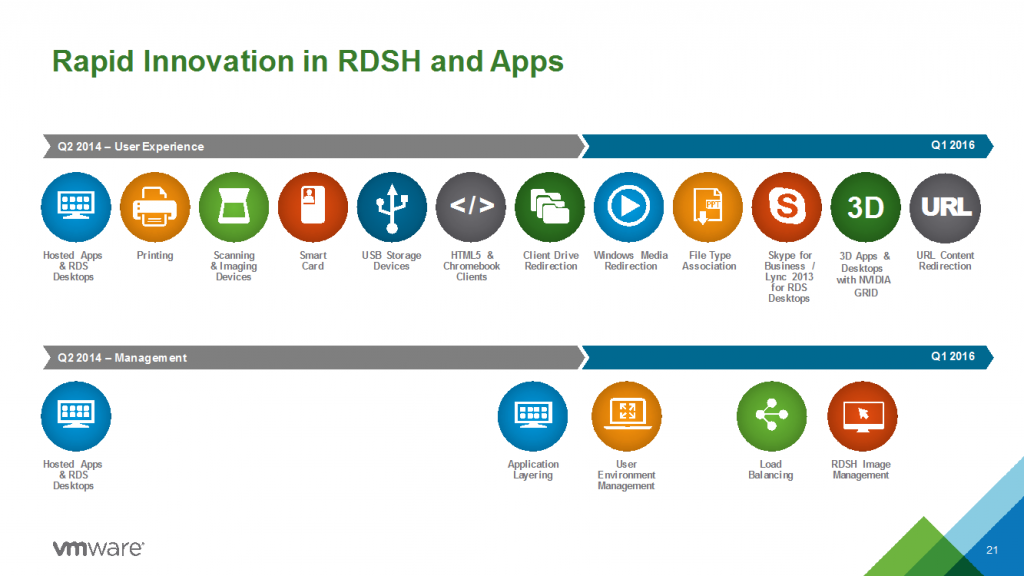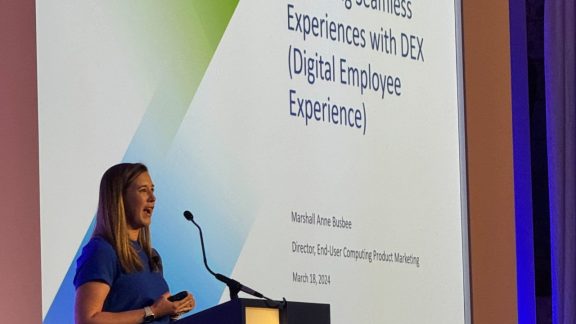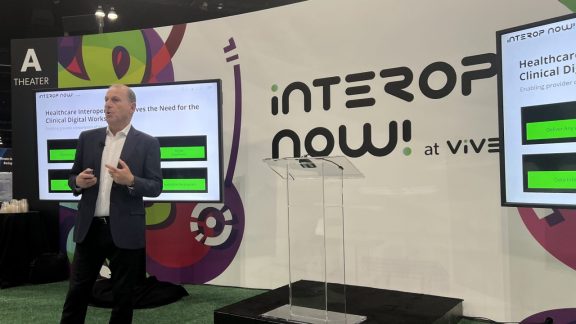It started a few years back with the release of VMware Horizon 6. VMware had entered the Remote Desktop Services (RDS) game. There were doubters, and many pundits wondered if VMware was really serious about making a dent in the RDS market. Naturally, some competitors made cute marketing videos and labeled the product a nonstarter—among other things. Fast forward two years, and Horizon RDS is now giving our competitors a run for their money.
[Related: VMware Horizon 7: Your High Performance, Ultra-secure, Throwaway Laptop Is Waiting for You]
Strengthening End-user Experience & Performance
From a strategic perspective, the plan was to get Horizon 6 out the door and then innovate every quarter to build upon our RDS capabilities. With each quarterly update to the Horizon agent and client, new capabilities were added to support additional clients and peripherals and support new use cases. In the two years since the release of Horizon 6, VMware has improved the end-user experience, optimized performance and improved management and automation capabilities for RDS.
In Horizon 6.2, major platform enhancements were added to dramatically simplify deployment, provide automation, reduce storage costs, add fault tolerance and provide improved load balancing.
To streamline provisioning, RDS hosts were integrated into VMware View Composer to provide single-image management with automation capabilities. IT administrators could deploy RDS hosts from a single image and leverage a “stateless” model. This allowed the IT administrator to patch the parent image, and when the RDSH farm is recomposed, all the child clones will receive the patched image. Using linked clones also meant that storage savings were realized.
[Related: What’s New with VMware Horizon 7]
Cloud Pod Architecture (CPA) support for RDSH deployments was added to provide an additional layer of fault tolerance through global entitlements. CPA support for RDSH enabled workers to use applications from multiple pods. And in the event that a single data center or pod fails, the users were automatically redirected to another pod.
Finally, an improved load-balancing solution was introduced for RDSH farms. This allowed IT administrators to load balance their RDS hosted servers based on CPU, memory, or other performance metrics. Combine this with the ability to set affinity and anti-affinity rules and this ensures users are always balanced appropriately across RDS hosts.
Taking User Experience to the Next Level with Horizon 7 & RDS
With Horizon 7, the user experience for RDS applications has been improved exponentially. The Horizon product team focused on enabling our customers to do more with their desktops and applications, all while getting a great user experience.
[Related: Taking a Closer Look at Horizon 7: Desktop & App Virtualization Reimagined]
Customers deploying Horizon 7 will find that they can now do more than ever with their RDS desktops and applications. Whether customers choose to deliver a full desktop or just an application, they have access to the following capabilities:
- Ubiquitous access to desktops and applications from a variety of clients including Windows, Linux, Mac, iOS, Android, Chromebooks, and even HTML browsers
- Support for use cases, such as graphics-intensive 3D applications with NVIDIA GRID vGPU and Unified Communications with Microsoft Lync 2013
- Quick and easy access to a user’s files from their RDS applications with File Type Association
- Support for the most commonly used peripherals, including printers, scanners and imaging devices, smartcards and USB storage devices
- Performance optimizations to increase application responsiveness, so that users get a snappy experience
- Brand new protocol VMware Blast Extreme, optimized for the mobile-cloud era
What this means for our customers is that they can now do more with their RDS applications, while delivering a rich user experience to their workers.
I look forward to sharing new updates with our customers in a few weeks. Stay tuned for exciting announcements here on the VMware End-User Computing Blog!
Want to hear the announcements as they happen? Register today for our free online event on June 7. Get your free ticket to EUC Insights 2016 here.








